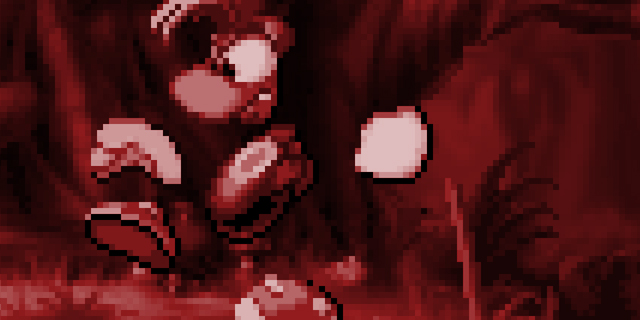
In From Pixels to Polygons, we examine classic game franchises that have survived the long transition from the 8- or 16-bit era to the current console generation. This time, Chris Dominowski and Graham Russell look at Ubisoft’s mascot platformer: Rayman.
Starting in the late ‘80s, it seemed like every gaming company had to have a cartoonish platformer mascot. The trend kicked into high gear in the ‘90s, when advancements in hardware allowed for more expressive characters and worlds that couldn’t have been done on past machines. Many mascots fell to the wayside, failing to live up to the sheer dominance of Mario and Sonic; to be fair, none of them ever did approach that level, but many did at least survive. This is the tale of one such survivor that beat the odds to deliver some superb platformers that a crueler market would have forgotten.
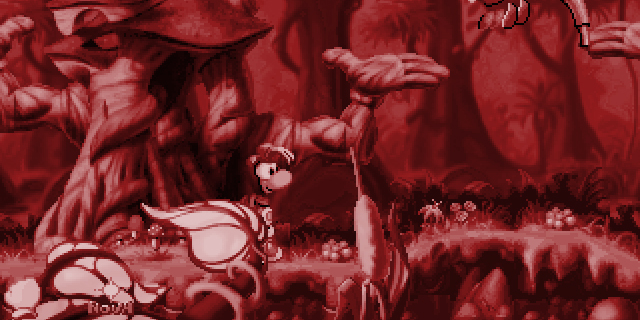
Avoiding the 3D arms race
The first game to bear the Rayman name attempted to do something very different from many of the other mascot platformers of the time. Many attempted to build a game in service of showing off a new mascot, without putting as much of a focus on the game’s world itself. This often meant that gameplay suffered, as the level design was a lower priority than character design.
Rayman set out to buck this trend by putting its emphasis not on the character himself (a nearly-mute, limbless humanoid creature), but instead on the world around him. The first Rayman game was about creating a vibrant, lively world full of interesting background characters. Rayman himself was more of a reflection on the bizarre world he inhabited.
It’s likely that much of the series’ aesthetic is tied to the original’s birth as a Jaguar project, as — though the system certainly had increased horsepower over the 16-bit consoles — it had little else to lean on but a more vibrant palette and increased visual fidelity. Those strengths make Rayman’s design a logical one, and the game (and series) retained that feel as it jumped to other platforms.
This focus on world-building shone through in the memorable level designs of the game, which — while admittedly borrowing from common platforming tropes of the era — polished them to a mirror shine with tight controls, a variety of powerups and a slightly more forgiving pace than its contemporaries. The distinction was that while Rayman did not represent a grand shift in the way we think about platformers, as the basic mechanics had already been tread many times before, the levels themselves gave the player more to think about with those mechanics. Sliding down the slopes of Allegro Presto to launch into the air, or escaping slowly-rising waters on a growing vine in the Swamp of Forgetfulness? Each demonstrates that the level design itself informs the experience just as much as the game mechanics themselves.
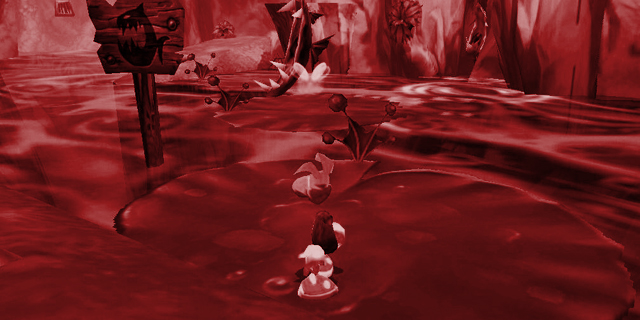
A world that connects its parts
If Rayman himself is a reflection of his own world, Rayman as a franchise is a reflection of the platforming environment it inhabits. So while the first game shaped itself around peers like Sonic and Earthworm Jim, the contemporaries of Rayman 2: the Great Escape were more like Super Mario 64 and Spyro the Dragon. The series is about building a world, and not so much mechanics, so Rayman 2 was an effort to make its formula work in the same climate.
You can see a lot of Mario 64’s influence in the world design and general structure of Rayman 2, but it makes its own way once again with building its own environments and themes. Instead of the abstract level design serving solely as the means to an end, Rayman 2’s worlds are designed as believable, living areas that the player must work through. The goals in the game are designed around the levels, and use the environment’s features as set pieces for both narrative and play. It’s also genuinely fun to just spend some time here, as it feels like a real home for these peculiar, thoroughly French-feeling denizens.
As platformers felt they had to be more action-focused and laterally-oriented to fit into the new gaming landscape, games such as Jak & Daxter and Ratchet & Clank found a great deal of success. Rayman 3 followed in the direction of those titles, as it did away with the lush, vibrant world of the previous games in favor of something darker.
In the third flagship game, more emphasis was put on Rayman himself than ever before, giving him a slew of powerups that allowed for temporary combat and maneuverability boosts. Rayman is now given an unprecedented amount of agency in his environment. In previous games, Rayman had to adapt to the world he was presented, and it was often a highly daunting task. In this entry, he has a great deal more options for dispatching his foes, which puts him in a position of power over his setting.
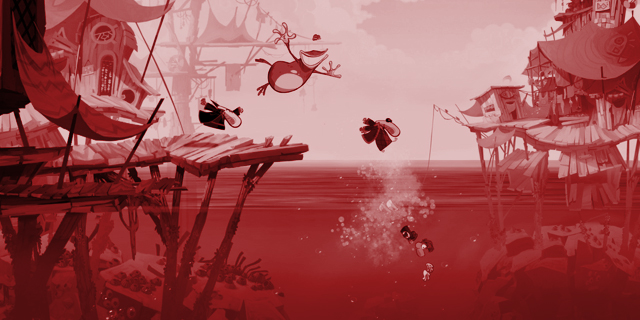
A franchise finds fresh legs
After years of finding ways to follow industry trends while carving a niche in the shifting landscape that was decidedly Rayman, the series found itself in a new quandary: what should it do when the genre almost completely vanishes? With no clear path to follow, the next Rayman game needed to be its own thing entirely, and as a result, the franchise was sidelined for years while those manic Rabbids kept the IP on life support. The development of the UbiArt Framework found just what Rayman needed: a justification to return to its 2D roots.
Rayman Origins and Rayman Legends seek to claim two particular aspects of platformers as new franchise hallmarks. The first? Smooth, gorgeous 2D art and movement. This plays to the strengths of Rayman as it was initially conceived, and it also sets it apart from its one true remaining competitor, New Super Mario Bros., in much the same way that Sonic the Hedgehog did in the 16-bit era. It moves faster, it’s exhilarating and it’s lush and vibrant in a way 2D Mario never has been.
The second? Challenging precision. In this way, Origins and Legends do manage to borrow from modern trends, dipping into the indie scene and mimicking nerve-wracking successes like Super Meat Boy and Bit.Trip Runner. This is also seen in mobile spinoffs Jungle Run and Fiesta Run, and that keep-trying-until-you-get-it approach works really well in that context. The games build around this through online leaderboards and time-attack bonuses, letting those who want to take on tough challenges feel like they’re accomplishing something in the process.
This difficulty is mostly framed as an optional thing, though; you can go for it if you want, but if you want to be like Rayman himself and pause to enjoy the scenery, the game lets you do that, too. And if you need a little more help, you can always rely on friends; the modern Rayman formula allows for all sorts of cooperation (and hijinks) with up to three other players.
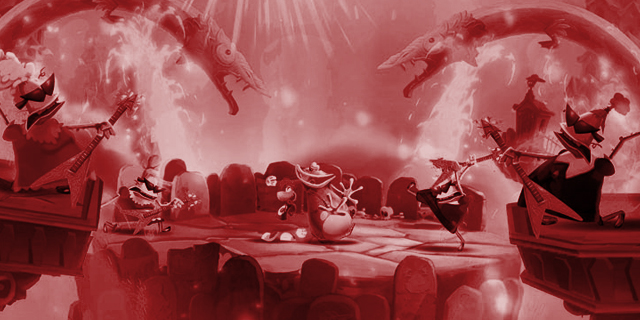
What’s the peak of the Rayman series?
Chris: While Rayman 2 may have been a benchmark title for 3D platformers with a intricate world to explore, it never felt quite as tight an experience to me as its predecessor. The first Rayman knew exactly what it wanted to be, and built a surprising amount of levels from a small, gradually-increasing list of abilities by instead focusing on creative level design. It had a charming, inviting world, and kept you coming back time and time again. Never has a 2D game felt so three-dimensional.
Graham: As great as the classic Rayman games were, it feels like the franchise was still searching for a soul, and I think it’s found it with games like Rayman Legends. It’s transformed into a coherent experience that stands the test of time a bit better than its transitional-3D-era predecessors, and while it is the latest entry in the series, not dropping off in quality with the next installment is going to be a tall order.



















